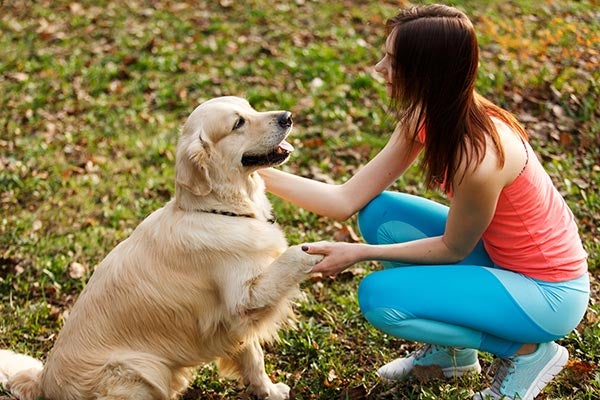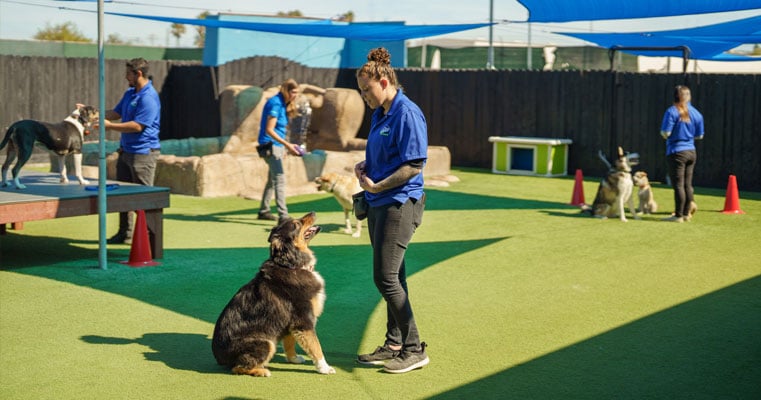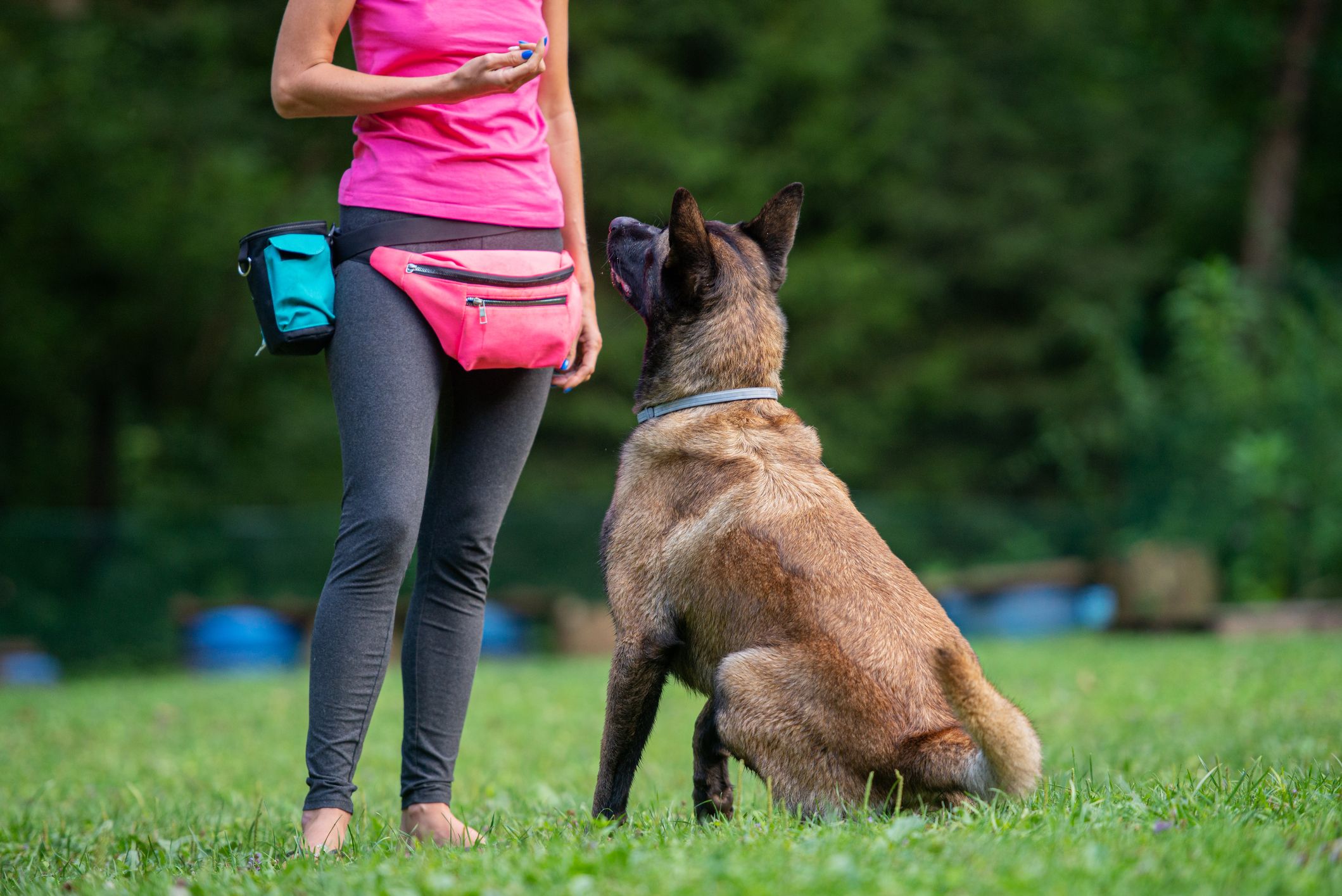Vital Tips for Effective Dog Training: A Guide for Animal Owners
Effective pet dog training is a diverse procedure that calls for a calculated method customized to both the family pet's temperament and the proprietor's goals. Understanding just how to browse these obstacles can significantly boost the training experience, eventually transforming the partnership between proprietor and canine.
Understanding Canine Habits
Understanding pet dog behavior is essential for reliable training and promoting a harmonious connection between dogs and their owners. Pets communicate mostly with body movement, articulations, and actions, making it vital for proprietors to translate these signals precisely. Recognizing a canine's position, tail placement, and ear orientation can supply understandings into its emotional state. For example, a wagging tail does not always indicate joy; it can additionally signal enjoyment or stress and anxiety.

Socializing plays a substantial duty in pet actions; direct exposure to different atmospheres, individuals, and various other animals can substantially affect a canine's character. Additionally, aspects such as breed features and private personality ought to guide training approaches, as some breeds may have certain behavioral traits that demand customized strategies. By understanding these elements, proprietors can create an encouraging environment that urges positive behavior, causing successful training end results and a deeper bond with their pet dogs.
Establishing Regular Commands
Efficient interaction with your pet dog begins with developing consistent commands. This foundational component of training is vital for fostering understanding in between you and your pet. Consistency in the commands you make use of makes sure that your pet can dependably link particular words or expressions with the preferred actions.
When choosing commands, pick clear, distinctive words that are easy to differentiate and claim from each other. Prevent using similar-sounding commands that may perplex your pet dog. For example, utilizing "rest" and "stay" is proper, yet "sit" and "hit" can lead to misconceptions.
Furthermore, keep the same tone and volume for every command. Pet dogs are delicate to singing signs, so differing your tone can develop complication.
It is similarly essential to guarantee that all family participants get on the same web page regarding the commands made use of. A united front in command use will prevent combined signals and strengthen the learning procedure.
Positive Reinforcement Methods
The power of positive reinforcement in pet training depends on its capability to encourage wanted habits with rewards and appreciation. This method is grounded in the concept that behaviors adhered to by positive outcomes are most likely to be duplicated. By integrating favorable reinforcement right into your training program, you can effectively form your dog's behavior in a constructive way.
To implement favorable reinforcement, it's vital to recognize what motivates your pet, whether it be treats, playthings, or spoken praise. When your pet performs a preferred activity, such as remaining on command, quickly award them with a reward or affection. This association in between the command and the positive result strengthens their understanding.
It's critical to timing the incentives properly; supplying the support within secs of the desired actions assists your pet make the connection (dog training). Furthermore, uniformity is key-- ensure that all family participants make use of the same commands and benefit systems to prevent confusion

Gradually, you can decrease the frequency of deals with as your pet learns the behavior, transitioning to applaud or periodic incentives. This approach not only fosters a strong bond between you and your pet dog yet also promotes a positive knowing atmosphere, making educating a delightful experience for both.
Socialization and Interaction
Regularly subjecting your pet dog to a selection of settings, individuals, and various other pets is crucial for their social development. Socialization ought to begin early, ideally during the crucial window of 3 to 14 weeks, when young puppies are most receptive to new experiences. Nevertheless, older pet dogs can likewise have a peek here gain from continuous socialization efforts.
Present your canine to various settings, such as parks, pet-friendly shops, and urban areas. This exposure helps them adapt to various stimulations, decreasing anxiety and worry reactions. Motivate favorable communications with other pet dogs and people, making certain that these encounters are regulated and secure to promote confidence.
Make use of organized playdates with well-mannered pets, as this can improve your dog's social skills and teach them proper behavior. Obedience courses and training sessions also supply outstanding possibilities for socialization, permitting your canine to connect with others in a supervised setting.
Monitor your pet's body language throughout communications, as this will aid you gauge their convenience degree. Slowly raise exposure to more tough situations while making certain that each experience declares. A well-socialized canine is more probable to display well balanced actions, making them a delight to have in any type of setup.
Dealing With Typical Training Obstacles
Every dog owner will certainly encounter training difficulties eventually, despite their pet's age or socialization level. Identifying typical concerns such as stubbornness, diversions, and fearfulness can assist in establishing effective methods click over here now for improvement.

Distractions throughout training sessions can thwart focus. To fight this, start training in a peaceful environment with very little stimulations. Gradually present interruptions as the pet dog becomes more skillful in commands. Short, constant training sessions are additionally reliable in preserving interest.
Fearfulness can prevent a pet's understanding procedure. Gradual desensitization to the source of fear, coupled with favorable reinforcement, can aid alleviate anxiousness. Persistence is essential; never ever compel a pet dog into a scenario that triggers distress, as this may aggravate the problem.
Eventually, understanding and addressing these usual difficulties with a structured strategy will cultivate a much more productive training experience, enhancing the bond between pet and owner while advertising effective understanding.
Final Thought
In summary, effective canine training relies upon a thorough understanding of canine actions, the establishment of regular commands, and the application of positive support techniques. Socializing plays a vital role in creating well-adjusted animals, while addressing typical training challenges needs perseverance and versatility. By executing these crucial techniques, pet dog owners can cultivate a strong bond with their pet dogs and promote preferable actions, eventually bring Going Here about a harmonious connection in between humans and their canine friends.
Comprehending dog habits is essential for efficient training and fostering an unified relationship between dogs and their proprietors.Socializing plays a substantial role in canine habits; exposure to different settings, individuals, and various other pets can significantly impact a dog's personality.The power of positive reinforcement in dog training lies in its ability to motivate preferred habits with benefits and appreciation. By including favorable support into your training program, you can successfully form your pet dog's habits in a useful way.
In summary, successful dog training relies on a comprehensive understanding of canine behavior, the facility of regular commands, and the application of favorable support methods.